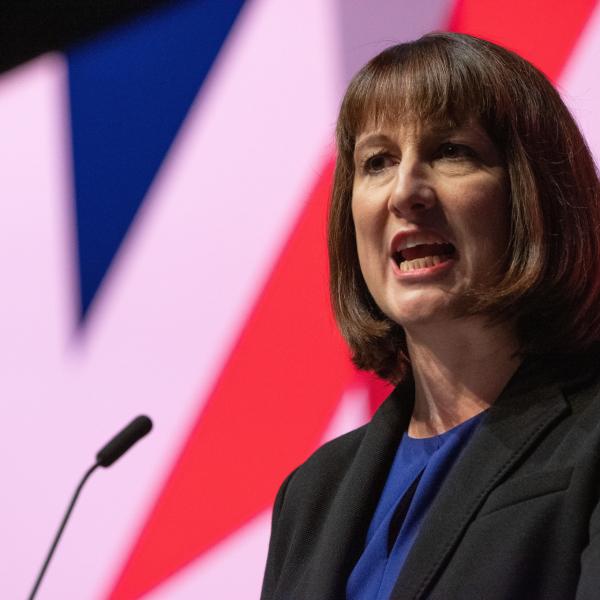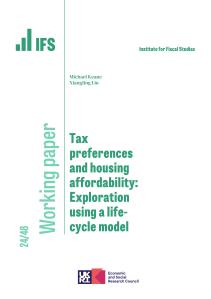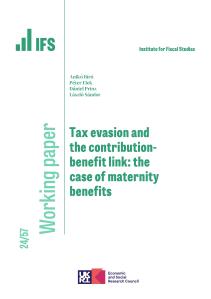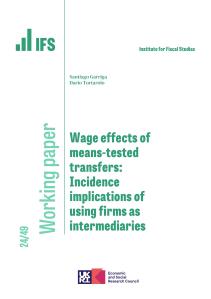Almost all of our taxes are plagued by serious design problems. That is as true in 2024 as it was in 2010.
There has been a lot of tax policy change since 2010 and a lot of complexity added – there have been many new taxes and new differentiated rates, allowances and reliefs added to existing taxes. But opportunities were missed to improve the design of the tax system. Some of the key problems from 2010 are now more urgent, including:
- the need to replace fuel duty revenues and get a plan for how to tax low-emission motoring;
- the unfairness that results from continuing to base council tax on property values from 1991 – now 33 years ago – in England;
- tax continues to be poorly targeted at reducing greenhouse gas emissions while the challenge of achieving net zero looms larger.
These are among the findings from a new IFS research report released today, funded by the abrdn Financial Fairness Trust and the Nuffield Foundation. The report assesses developments in tax policy and trends in tax revenue since 2010.
It is now well known that tax revenue is high by historical UK standards (but not international standards) and forecast to keep rising, from 36% of national income today to around 37% by the end of the next parliament. The increase in revenue has happened since the 2019 general election, with the last parliament seeing the biggest rise in the tax take of any parliament on record. We show that:
- Relative to 2010, we now raise more revenue (as a share of national income) from income tax, VAT, corporation tax and capitaltaxes. Less is raised from fuel and tobacco duties and from business rates.
- Remarkably, significantly higher income tax revenue has been achieved while cutting income taxes for most people.
- The share of over-65s paying income tax has risen rapidly, from 48% in 2010–11 to 65% in 2023–24 – higher than the share of working-age adults paying income tax (63%) for the first time ever.
- The number of people paying the higher or additional rate of income tax has more than doubled, from 6% of the adult population in 2010–11 to 13% now.
- The share of income tax paid by the top 10% of income tax payers has risen from 54% in 2010–11 to 60% in 2023–24.
- The tax gap – the gap between the tax HMRC actually collects and the amount it thinks theoretically ought to be paid – has beenreduced substantially. But HMRC’s customer service levels have reached an all-time low.
- There have been big swings in policy direction. The income tax personal allowance was increased a lot and then cut a lot, while the corporation tax rate was reduced considerably and then increased sharply (with that increase being announced, then cancelled, and then reinstated). These are just two examples among many.
Helen Miller, IFS Deputy Director and an author of the report, said:
‘Governments since 2010 have made choices about how much tax revenue to raise, and from whom to raise it. One remarkable result is that significantly higher income tax revenue has been achieved while working-age individuals on low and middle incomes have actually seen their income taxes cut. A long-running trend towards raising more income tax from those with the highest incomes has been continued.
‘Unfortunately, governments have chosen not to fix any of the big structural problems with how taxes are designed. The list of major tax problems in 2024 is a copy-and-paste from the 2010 list. Missing the opportunity to reform taxes substantively means missing opportunities to boost growth and remove inequities that arise when similar people are taxed differently. Whether the next government chooses to raise or cut taxes overall, we should all hope that it will choose to leave us with better taxes.
‘Promises not to increase certain taxes are a mistake. They can be a serious impediment to good tax reform. All parties should avoid putting tax commitments in their manifestos that would impede making the tax system better.’
Mubin Haq, Chief Executive of abrdn Financial Fairness Trust, said:
‘Taxes have been central to the current election debate. They have been rising but not for the majority. A massive switch around means a higher proportion of over-65s now pay income tax than working-age adults. We’ve also seen those with the highest incomes contributing more to income tax. These trends have meant that income taxes have reduced for many others. Remarkably, despite taxes reaching historic highs, the direct tax burden on average earners is at its lowest level in almost 50 years. This leaves considerable scope for taxes to rise to avoid deep cuts to public services.’











